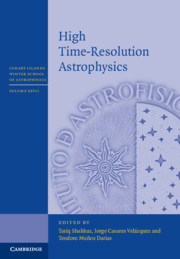Book contents
- Frontmatter
- Contents
- Contributors
- Participants
- Preface
- Acknowledgements
- Abbreviations
- 1 Radiation Processes and Models
- 2 HTRA Instrumentation I
- 3 HTRA Instrumentation II
- 4 X-ray Emission from Black-Hole and Neutron-Star Binaries
- 5 Radio Observations and Theory of Pulsars and X-ray Binaries
- 6 Incorporating Gamma-ray Data into High-Time Resolution Astrophysics
6 - Incorporating Gamma-ray Data into High-Time Resolution Astrophysics
Published online by Cambridge University Press: 31 July 2018
- Frontmatter
- Contents
- Contributors
- Participants
- Preface
- Acknowledgements
- Abbreviations
- 1 Radiation Processes and Models
- 2 HTRA Instrumentation I
- 3 HTRA Instrumentation II
- 4 X-ray Emission from Black-Hole and Neutron-Star Binaries
- 5 Radio Observations and Theory of Pulsars and X-ray Binaries
- 6 Incorporating Gamma-ray Data into High-Time Resolution Astrophysics
Summary
- Type
- Chapter
- Information
- High Time-Resolution Astrophysics , pp. 169 - 194Publisher: Cambridge University PressPrint publication year: 2018



